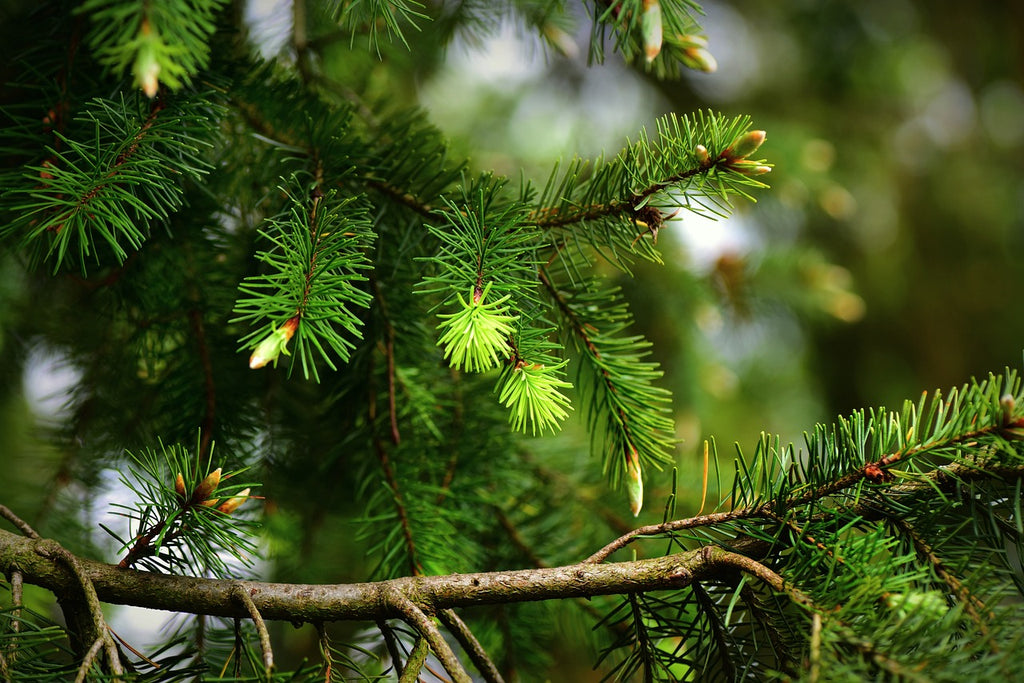20 Types of Wood and Leaves NEVER to Use in a Terrarium!

Written by Mariah Healey, ReptiFiles.com
Biodegradables are essential to a functional and thriving bioactive. It might seem simple at first glance. After all, you just add wood and leaves, right?
Wrong!
If you use the wrong type of wood and/or leaves, you can accidentally destroy your CUC population or even poison your pet! Here’s what you need to know.
Woods to Avoid
Some woods are known to be toxic to wood workers, which means they may have a stronger effect on small animals. The good news is that in most cases the sawdust is the problem, which isn’t going to cause problems in a bioactive enclosure context. However, there are a few where the wood and bark are known to cause reactions in humans and other animals:
- Pine
- Cedar
- Cocobolo
- Ebony
- Goncalo alves
- Greenheart
- Padauk
- Purpleheart
- Rosewood
- Sassafras
- Black walnut
- Grape wood (This one isn’t actually toxic, but it does tend to mold easily, especially in a bioactive environment. Even with a CUC, grape wood tends to be more trouble than it’s worth.)
In addition, it’s good practice to avoid anything potentially contaminated by pesticides, herbicides, and/or exhaust fumes.
The Problem with Pine and Cedar
You’ve probably heard that pine and cedar are dangerous to snakes, and should be avoided as a rule when it comes to reptile substrate and décor. But is this advice based on fact, or is it just some old bit of hearsay? Hard evidence of pine-related neurological damage in reptiles is difficult to find, but there is evidence that pine is likely to be harmful in other ways.
One study was particularly influential to this belief: “The toxicity of constituents of cedar and pine woods to pulmonary epithelium” by Ayars et al (1989). This study was originally designed to take a closer look at reports of asthma and chronic lung disease in humans who were exposed to cedar and pine woods/resin on a daily basis for prolonged periods of time. The study used lung tissue cultures from rats and humans, as well as rat lungs and rat tracheal explants, and exposed them to solutions of the suspected harmful compounds from pine and cedar. Exposure to the concentrates of these compounds was found to cause damage to all samples. The study concluded: “We hypothesize that repeated occupational exposure to these substances [cedar wood and pine resin] might promote the chronic lung damage.”
Other studies also found evidence against the use of pine and cedar with small animals:
“A comparison of litters used for broiler production” by Seegar et al. (1951) found that chickens kept on softwood shavings were more likely to get respiratory infections. This is significant because chickens and reptiles are closely related.
“Beddings for Laboratory Animals: Criteria of Biological Evaluation” by Odynets, A. et al. (1991) notes that mice kept on pine shavings for varying lengths of time were more likely to have abnormal immune function, enlarged livers, and/or decreased reproduction. It also notes that rats and mice will avoid pine and cedar shavings when given their choice of bedding.
In a summary of an interview with Dr. Richard Evans published on Anapsid.org in 1994, it is noted that the aromatic compounds in pine and cedar are VOCs (volatile organic compounds) which are known to irritate the skin and respiratory membranes. Irritation can lead to increased likelihood of bacterial, viral, and or/fungal infection through compromising these barriers. Symptoms of irritation include discharge from the eyes and nose, sneezing, coughing, frequent blinking, light sensitivity, irregular breathing, regurgitation, and even falling unconscious. Interestingly, in the same article, Melissa Kaplan recommends: “You might want the rethink buying prey that has been raised or housed on cedar.” Fortunately, cedar animal bedding is no longer in common use.
Safe Woods for Terrariums
Here are some safe, tried-and-true options for wood décor in your terrarium:
- Mopani
- Cholla
- Cork
- Paperback bark
- Bamboo
- Manzanita / Ghostwood
- Jungle Wood / Liana
- Birch
- Spider wood
- Dragon tail wood/yucca spears
- Driftwood (when prepared correctly)
Leaves to Avoid
- Pine needles*
- Cedar
- Black walnut
- Cherry
- Chokecherry
- Birdcherry
- Peach
- Apricot
- Other fruit tree leaves
Many of these leaves contain toxic compounds that make them dangerous to eat. This is unlikely to happen with your pet, but CUC munch on leaves, so the CUC could be harmed, your pet could be indirectly harmed by munching on the CUC after they’ve eaten these leaves.
*It should be noted that although many reptiles live in pine forests, these are open areas with excellent ventilation. Reptile enclosures simply can’t compare, which means that the aromatic compounds from pine are more likely to get trapped and potentially harm your pet.
Again, avoid any and all leaves potentially contaminated by pesticides, herbicides, and/or exhaust fumes. Fruit tree leaves are particularly likely to be contaminated.
Safe Leaves for Terrariums
- Live oak
- Water oak
- Almond
- Magnolia
- Cottonwood
- Aspen
- Sycamore
- Birch
- Beech
- Maple
- Mulberry
- Catappa
- Mango
- Casho
- Cows ear
- Marupa
Conclusion
The good news is that most woods are harmless if you’re just using dry branches, and most tree leaves are quite safe as well. However, if you’re collecting your own décor and/or biodegradables, make sure you’re not accidentally introducing harmful fungus or other pathogens to your bioactive by properly treating your treasure first:
Wood should be baked in the oven at about 200°F for 1 hour, boiled for 20 minutes, or frozen for at least two weeks. For large pieces, scrub it down with hot water to remove all loose debris, then let it sit out on a tarp in direct sunlight for at least a few days, turning it over daily. Sunlight can be very harsh to nasties!
Leaves should be baked in the oven at 140°F for about 20 minutes or boiled for 10 minutes and then dried. Freezing for at least two weeks is also an option.
- Rebekah Walenta










